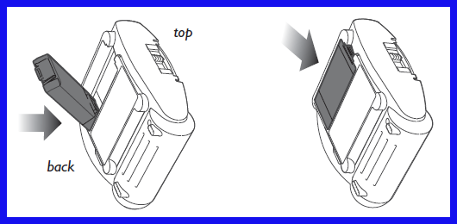Philips HeartStart Batteries FAQS
Philips HeartStart Batteries
How do I replace the Philips HeartStart battery?
- Adult SMART Pads Cartridge (spare recommended) [REF: M5071A]
- Infant/Child SMART Pads Cartridge [REF: M5072A]
- Adult Training Pads Cartridge [REF: M5073A]
- Infant/Child Training Pads Cartridge [REF: M5074A]

What is the battery type for the Philips HeartStart Onsite and Home devices?
The power source for the Philips HeartStart Onsite and Home devices is a 9 VDC, 4.2 Ah battery pack. It contains 9 LiMnO2 battery cells, similar to those used in cameras. The battery pack is non-rechargeable.
Is the Philips HeartStart M5070A battery compatible with both the Philips HeartStart Onsite and Home devices?
Yes, the Philips HeartStart M5070A battery is compatible with both the Philips HeartStart Onsite and Home devices.
Are rechargeable batteries available for the Philips HeartStart Onsite and Home devices?
No, rechargeable batteries are not available for the Philips HeartStart Onsite and Home devices.
What are some troubleshooting hints for the Philips HeartStart M5070A batteries?
Anytime that a battery is suspected of being low or having problems, the first troubleshooting step should be to perform a Battery Insertion Test (BIT) using the suspect battery, which is initiated by removing then re-inserting the battery into the unit. If the unit passes a BIT with no indications of battery problems, the unit and battery are both ready for service. Other conditions, such as keeping the unit outside the recommended storage temperature can cause failure messages similar to a low battery message. These messages will be cleared out with a successful BIT. If the unit does not pass the BIT, the BIT should be reattempted with a known good battery in order to determine if the battery is the cause of the failed BIT. If the unit again does not pass, please reach out to Philips’ customer service team. Contact details can be found in your AED’s Instructions For Use or Owner’s Manual, or on the Philips AED Support and Service website.
Can I open the Philips HeartStart M5070A batteries and replace the cells?
Do not try to recharge, open, crush, or burn the battery, or it may explode or catch fire.
What is the capacity of the Philips HeartStart M5070A batteries?
When new, a minimum of 200 shocks or 4 hours of operating time at 77 degrees F (25 degrees C). Supports 10 hours of use in Training mode.
How often should I replace Philips HeartStart M5070A batteries?
You should replace the battery every 4 years.
What is the shelf life of the Philips HeartStart M5070A batteries (prior to use)?
A minimum of 5 years from the date of manufacture when stored and maintained according to directions provided in the Philips HeartStart Owner’s Manual.
What is the “Install By“ date printed on the battery?
The battery will have a working life of 4 years from the install date if the battery is installed into the Philips HeartStart AED device before the printed “Install By” date and if it was stored and maintained according to directions provided in the Philips HeartStart Owner’s Manual.
How do I dispose used or expired Philips HeartStart M5070A batteries?
The battery cells contain chemicals. The chemistry used in each battery is identified by a symbol on the label; symbols are defined in the defibrillator Owner’s Manual. Recycle the battery at an appropriate recycling facility.
Who do I contact for additional information on the use of Philips HeartStart AED batteries?
For questions or additional support regarding Philips HeartStart devices and accessories, please reach out to Philips’ customer service team. Contact details can be found in your AED’s Instructions For Use or Owner’s Manual, or on the Philips AED Support and Service website.
You may also visit the Philips AED Support and Service website to access the Philips HeartStart Owner’s Manuals, Technical Reference Manuals, Product Notices, AED accessories information, and demo videos on the use of the Philips HeartStart AED devices.
